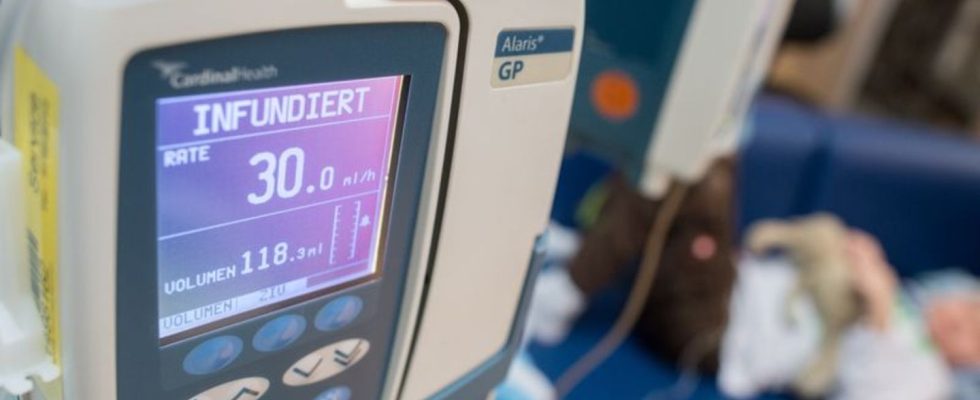Kate’s cancer
Adjuvant chemotherapy – what exactly is it?
During chemotherapy, drugs are intended to prevent cancer cells from dividing and thus multiplying. photo
© Matthias Balk/dpa
Princess Kate is receiving chemotherapy as a precaution. But how does that work? And what are the chances of recovery?
Chemotherapy is a drug therapy against cancer. So-called adjuvant chemotherapy usually follows the removal of a tumor. It is given to destroy cancer cells that may still be present in the body. This is intended to reduce the risk of a possible relapse.
The drugs used in chemotherapy, usually administered as an infusion or tablet, are called cytostatics. They are intended to prevent cancer cells from dividing and thus stop them from multiplying unchecked. Radiation therapy or immunotherapy can be used in addition to or as an alternative to chemotherapy.
Healthy body cells are also affected
There are usually several consecutive treatment cycles, often four to six – the exact process depends, among other things, on the substances used and the patient’s state of health. The entire treatment with cytostatics can extend over several months.
It is not possible to make a general statement about the chances of recovery through chemotherapy because they depend on many factors such as the type of cancer, tumor stage, the body’s reaction and the age of the person affected.
The biggest problem with the use of cytostatics is that they not only affect tumor cells, but also healthy body cells. Those that are particularly affected are those that divide frequently: cells in the hair roots, the mucous membranes in the mouth and intestines, and the blood-forming system, for example.
This can lead to side effects such as hair loss, nausea, inflammation of the mucous membranes, for example in the mouth, tiredness and exhaustion due to too few red blood cells and increased susceptibility to infections due to too few white blood cells. Not all chemotherapy is accompanied by complete hair loss. After the therapy ends, the hair grows back again.
In cancer medicine, patients are usually considered cured if the cancer has not returned after five years. Even then, a relapse cannot be ruled out, but it is becoming increasingly unlikely for most types of tumors.

